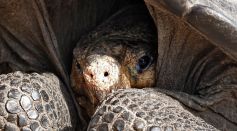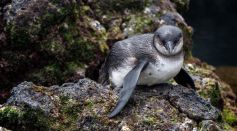Tags: Galapagos Islands
Giant Tortoises Are Back to the Galápagos Islands, Prove Their Worth in Reshaping an Entire Ecosystem

8-Year-Old French Boy Miraculously Survived After Falling Into a 328-Foot-Deep Volcanic Sinkhole Crater in Ecuador

Living Galapagos Giant Tortoise Discovered for the First Time After 100 Years of Being ‘Extinct’

Predicting Volcanic Eruptions Might Be Possible Now Through Supercomputers

Never Before Seen Giant Tortoise, Over 8,000 Lineage Discovered in Galapagos
Darwin's Finches' Biology Provide Insights to the Theory of Evolution with How They Evade a Parasitic Fly
Giant Tortoise Still Roams Galapagos Islands After Being Thought to be Extinct 100 Years Ago
Famed Darwin's Arch Rock Formation in Galapagos Islands Collapses Due to Natural Erosion
Vampire Finches Feast On the Blood of Big Birds

The Galapagos Sees Record Increase in Its Endemic Penguins and Cormorants

31 New Marine Species Discovered in the Galapagos Archipelago
Diego the Giant Tortoise Returns Home to Galapagos After 5 Decades of Reproducing in Captivity
The Resurgence of Two Seemingly Extinct Species
Galapagos Research Locates Triggerfish As Key Predator In Food Web
How One Endangered Species Is Making A Change For the Better—Eating Sweeter Flora Instead
The Energy for a New Crawl—Galápagos Tortoises Feast on Invasive Plants for a New Foraging Technique
Giant Tortoise Babies Born in the Wild for the First Time in 100 Years
Most Popular

Will Earth's Magnetic Poles Flip Next? Magnetic Pole Reversal Explained Through Cutting‑Edge Magnetosphere Science

Relativity Time Dilation Explained: The Physics of Time and Why It Moves Differently in Space

How Lightning Science Reveals Why Charged Storms Are Rising with Global Warming Effects

De-Extinction vs. Conservation Science: Which Approach Protects Biodiversity Most Effectively?





